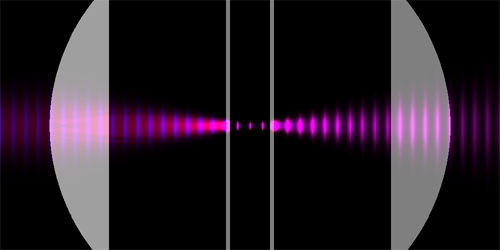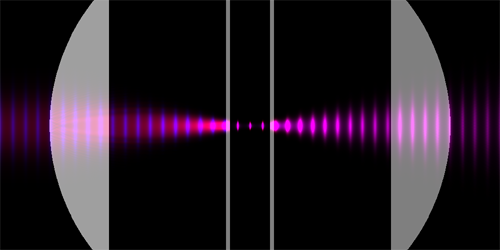How to Transmit Light Through a Vapor
Researchers have long known that very intense light sources can create self-reinforcing pulses of light called solitons, which can propagate through an opaque medium as though it were nearly transparent. A specific type of soliton called a simulton can also be created by combining a weak signal with an intense pulse of differently colored light, but this had never been demonstrated in a gas. Now, a team led by Charles Adams and Robert Potvliege, at Durham University in the UK, has discovered signs of simultons in a relatively dense atomic vapor. The authors say that finding evidence of the phenomenon in this system was a surprise, as atomic vapors are commonly studied and well-characterized. The result suggests that the medium might also sustain other unusual forms of light pulses.
The researchers beamed a weak continuous-wave (CW) laser and a more powerful pulsed laser into a dense, 2- -thick vapor of rubidium atoms. Each laser’s frequency was tuned to trigger a transition of the rubidium atoms to a different energy. While the CW laser alone was quickly absorbed by the medium, when both lasers were used together, some of the CW light was transmitted right through. From their calculations, the researchers interpret the vapor’s increased transparency as being due to interactions between the two lasers and the rubidium atoms. These interactions appear to amplify the CW light into a sequence of pulses, which the researchers identify as simultons.
In the future, the researchers want to study how simultons form and propagate in thicker vapor cells. They also plan to investigate simulton interactions with highly excited atoms, which could lead to applications in optical quantum technologies.
This research is published in Physical Review Letters.
–Sophia Chen
Sophia Chen is a freelance science writer based in Tucson, Arizona.





